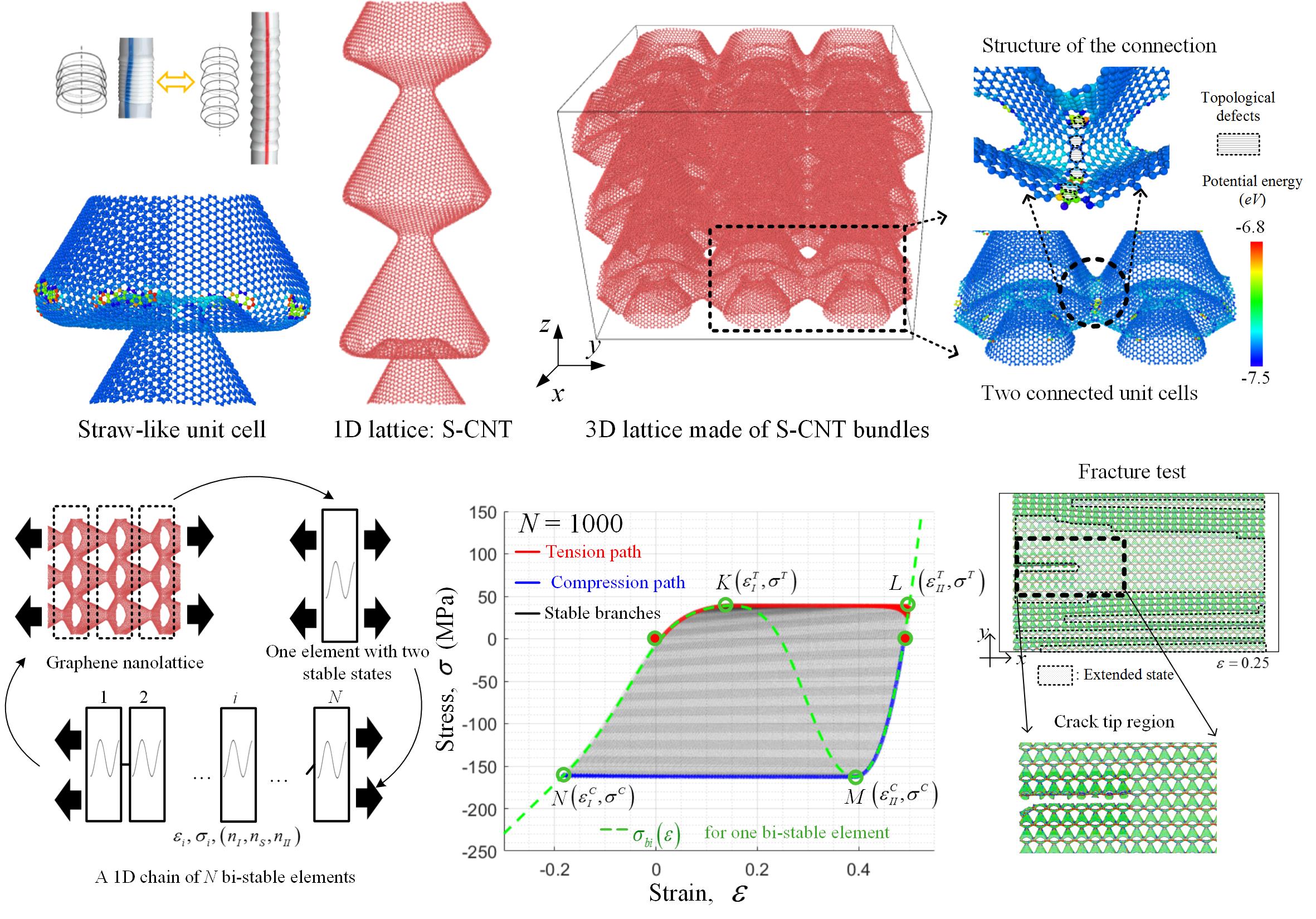Carbon nanolattices: oppotunities and challenges
carbon nanolattices: optimized lattices + ultra strong constituents Carbon micro/nano lattices are a unique family of architected metamaterials constructed from micro/nano-scale car...
The energy dissipation in graphene nanolattice is enhanced via a novel design with snap-through instability. In this paper, we have constructed a group of reconfigurable graphene nanolattices based on a straw-like unit design. Combining molecular dynamics and theoretical model, pseudo plasticity and hysteresis of the nanolattices are demonstrated and explained. With these novel toughening mechanisms, the designed graphene nanolattice is predicted to be tolerant of crack-like flaw and dissipate energy better than carbon steel.

carbon nanolattices: optimized lattices + ultra strong constituents Carbon micro/nano lattices are a unique family of architected metamaterials constructed from micro/nano-scale car...
Challenge: Can we use snap-through to toughen graphene nanolattices? Through mechanism-inspired structure topological design, molecular dynamics simulations, theoretical anal...
1D lattice: straw-like carbon nanotubes (SCNTs) Straightforwardly, by repeating the unit cell along the axial direction, we obtain the 1D lattice of a straw-like CNT (SCNT). The SCN...
In this section, we construct a theoretical model to explain our observation of 3D graphene nanolattice with snap-through stability and predict the collective behavior of samples wit...